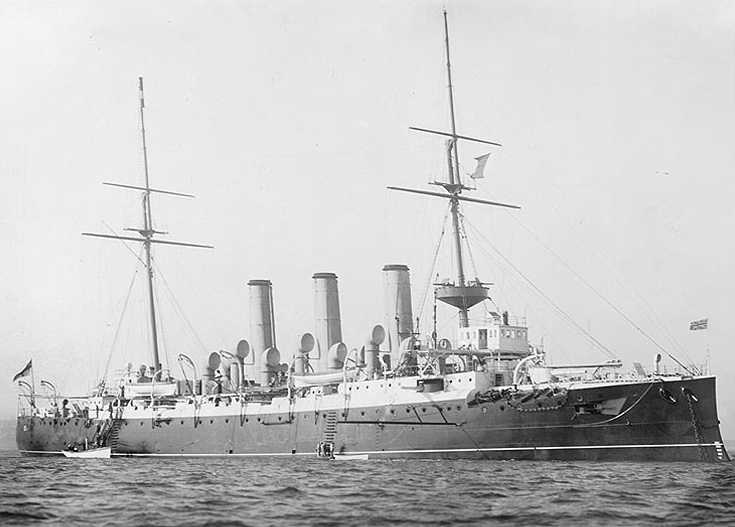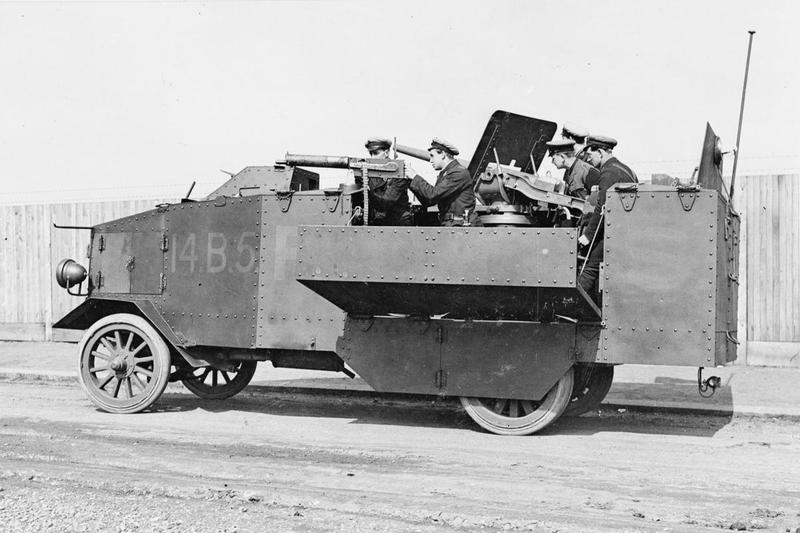|
Mark I was of monobloc construction while the Mark II was a built-up design. Almost all surviving guns in 1939 were Mark I. |

HMS Furious in 1898
|

Hotchkiss 3-pdr and machine gun being used
on an Armored Lorry
|
|
Mark I was of monobloc construction while the Mark II was a built-up design. Almost all surviving guns in 1939 were Mark I. |

HMS Furious in 1898
|

Hotchkiss 3-pdr and machine gun being used
on an Armored Lorry
|
| Designation | Hotchkiss 3-pdr (1.4 kg) [1.85"/40 (47 mm)] QF Marks I and II |
| Ship Class Used On | Many |
| Date Of Design | about 1885 |
| Date In Service | 1886 |
| Gun Weight | 528 lbs. (240 kg) |
| Gun Length oa | 80.6 in (2.048 m) |
| Bore Length | 74.1 in (1.881 m) |
| Rifling Length | N/A |
| Grooves | N/A |
| Lands | N/A |
| Twist | N/A |
| Chamber Volume | 43 in3 (0.705 dm3) |
| Rate Of Fire | 20 rounds per minute |
| Type | Fixed |
| Weight of Complete Round | HE - 5.7 lbs. (2.6 kg) |
| Projectile Types and Weights | HE - 3.3 lbs. (1.5 kg) |
| Bursting Charge | N/A |
| Projectile Length | N/A
Complete Round 21.4 in (54.2 cm) |
| Propellant Charge | World War I: 0.54 lbs. (0.24 kg)
MD
World War II: 0.465 lbs. (0.211 kg) HSCT 134-055 World War II: 0.602 lbs. (0.273 kg) NF 029 |
| Muzzle Velocity | HE - 1,884 fps (574 mps) (new gun)
HE - 1,873 fps (571 mps) (average gun) |
| Working Pressure | N/A |
| Approximate Barrel Life | about 6,000 rounds |
| Ammunition stowage per gun | Monitors of World War I carried 300 rounds per gun |
| Note: During World War II, outfits were all HE, although some common rounds were used during the early part of the war. Flashless was issued in the latter part of the war. | |
| Elevation | With 3.3 lbs. (1.5 kg) HE Shell |
| 20.7 degrees | 6,500 yards (5,944 m) |
| 45 degrees | 7,900 yards (7,200 m) |
| Maximum AA Ceiling | about 10,000 feet (3,000 m) |
| Effective AA Range | about 1,200 yards (1,100 m) |
| Designation | Single LA Mountings: Mark I and
Mark I*
Single HA Mountings: Mark IV HA, Mark V HA and Mark VI HA |
| Weight | 0.7 tons (0.8 mt) |
| Elevation | Marks I and I*: -5 / +25 degrees
Mark IV: N/A Mark V: -5 / +70 degrees Mark VI: -5 / +60 degrees |
| Elevation Rate | Manually operated, only |
| Train | 360 degrees |
| Train Rate | Manually operated, only |
| Gun recoil | N/A |
| Note: Marks I, I* and IV were pre-war and World War I mountings. Marks V and VI were build during World War II. The Mark VI used rubber recoil buffers. Some Mark I mountings were converted to HA types and then designated as Mark IC HA. These had an elevation range of -8 to +60 degrees. | |
27 February 2007 - Benchmark
12 February 2012 - Updated to latest template
15 December 2013 - Added picture of 3-pdr
on a lorry